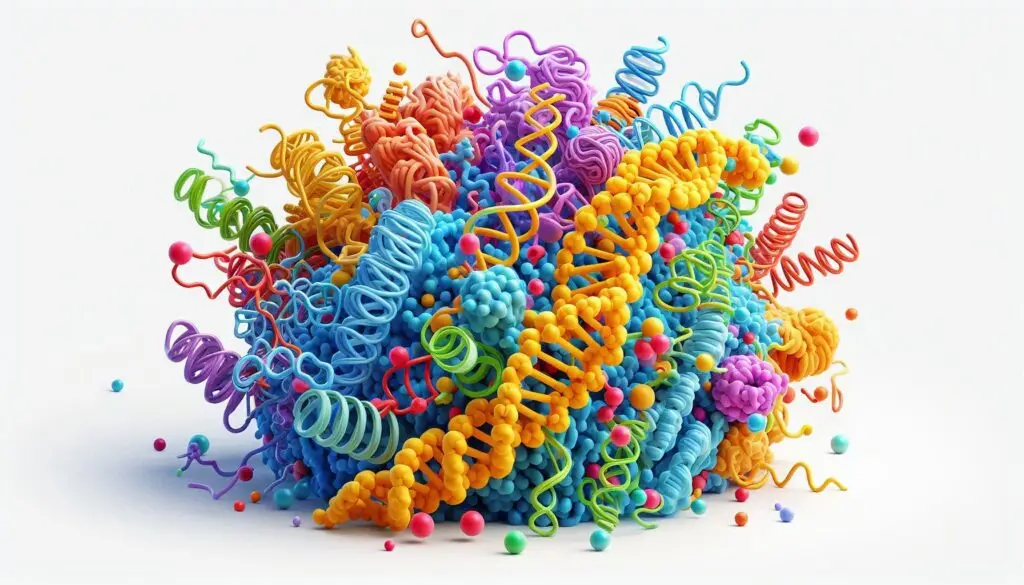Cell Organelles

What Are Cell Organelles?
Cell organelles are specialized structures within cells that carry out essential functions for cellular life. Found primarily in eukaryotic cells, these organelles are enclosed within membranes. This unique structure creates environments suited for their specific tasks. For a more detailed overview, you can check out BYJU’S on Cell Organelles or Next IAS.
Types of Cell Organelles
Cell organelles can be categorized into two main types:
1. Membrane-Bound Organelles
These organelles are enclosed by lipid bilayers. They include:
- Nucleus: The control center of the cell that houses genetic material (DNA). It regulates cellular activities and is essential for cell division.
- Mitochondria: Known as the powerhouse of the cell, mitochondria generate energy in the form of ATP through cellular respiration.
- Endoplasmic Reticulum (ER):
- Rough ER: Studded with ribosomes; it synthesizes proteins.
- Smooth ER: Involved in lipid synthesis and detoxification processes.
- Golgi Apparatus: Modifies, sorts, and packages proteins and lipids for transport.
- Lysosomes: Contain enzymes that break down waste materials and cellular debris.
- Chloroplasts (in plants): Conduct photosynthesis to convert solar energy into chemical energy.
2. Non-Membrane-Bound Organelles
These structures lack a surrounding membrane and include:
- Ribosomes: Sites of protein synthesis found either free in the cytoplasm or attached to the rough ER.
- Cytoskeleton: A network of fibers providing structural support and facilitating intracellular transport.
- Centrioles: Involved in organizing microtubules during cell division.
Structure of Cell Organelles
The structure of cell organelles is highly specialized. Each organelle’s design enables it to perform its unique functions effectively. Below is an overview of some key organelles’ structures:
Nucleus
The nucleus is surrounded by a double membrane called the nuclear envelope. It contains chromatin (DNA) that condenses into chromosomes during cell division.
Mitochondria
Mitochondria have a double membrane structure. The inner membrane folds into cristae, increasing surface area for ATP production.
Endoplasmic Reticulum
The rough ER has ribosomes on its surface, while the smooth ER has a smooth appearance due to the absence of ribosomes.
Golgi Apparatus
This organelle consists of flattened membranous sacs called cisternae. It modifies proteins received from the ER.
Lysosomes
Lysosomes are small spherical vesicles containing hydrolytic enzymes needed for digestion.
Chloroplasts
Chloroplasts have a double membrane with an internal system of thylakoids stacked into grana. They contain chlorophyll for photosynthesis.
Functions of Cell Organelles
Each cell organelle performs specific functions vital to the cell’s overall survival and functioning. Here’s a breakdown:
Nucleus
The nucleus stores genetic material and controls cellular activities like growth and reproduction.
Mitochondria
Mitochondria produce ATP through aerobic respiration, providing energy for cellular processes.
Endoplasmic Reticulum
The rough ER synthesizes proteins while the smooth ER synthesizes lipids and detoxifies harmful substances.
Golgi Apparatus
The Golgi apparatus modifies proteins from the ER and packages them into vesicles for transport to their destinations.
Lysosomes
Lysosomes digest macromolecules, recycle cellular components, and remove waste products from the cell.
Chloroplasts
Chloroplasts convert sunlight into chemical energy through photosynthesis, producing glucose and oxygen as byproducts.
Importance of Cell Organelles
Understanding cell organelles is crucial for several reasons:
- Cellular Functionality: Each organelle plays a specific role in maintaining homeostasis within the cell.
- Disease Understanding: Many diseases arise from dysfunctions in specific organelles. For instance, mitochondrial diseases affect energy production.
- Biotechnology Applications: Knowledge about organelle functions can lead to advancements in genetic engineering and drug development.
Conclusion
Cell organelles are essential components that contribute significantly to cellular life. Their specialized structures allow them to perform unique functions critical for maintaining homeostasis and facilitating various cellular processes. For more detailed insights on each type of organelle, refer to resources like Kenhub.
For more pearls of Vets Wisdom:
Raising Layer Birds from Day-Old Chicks





Responses